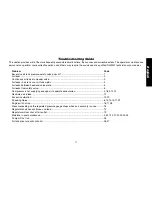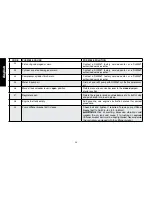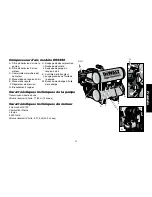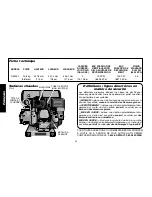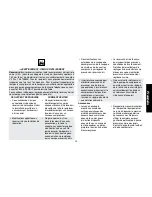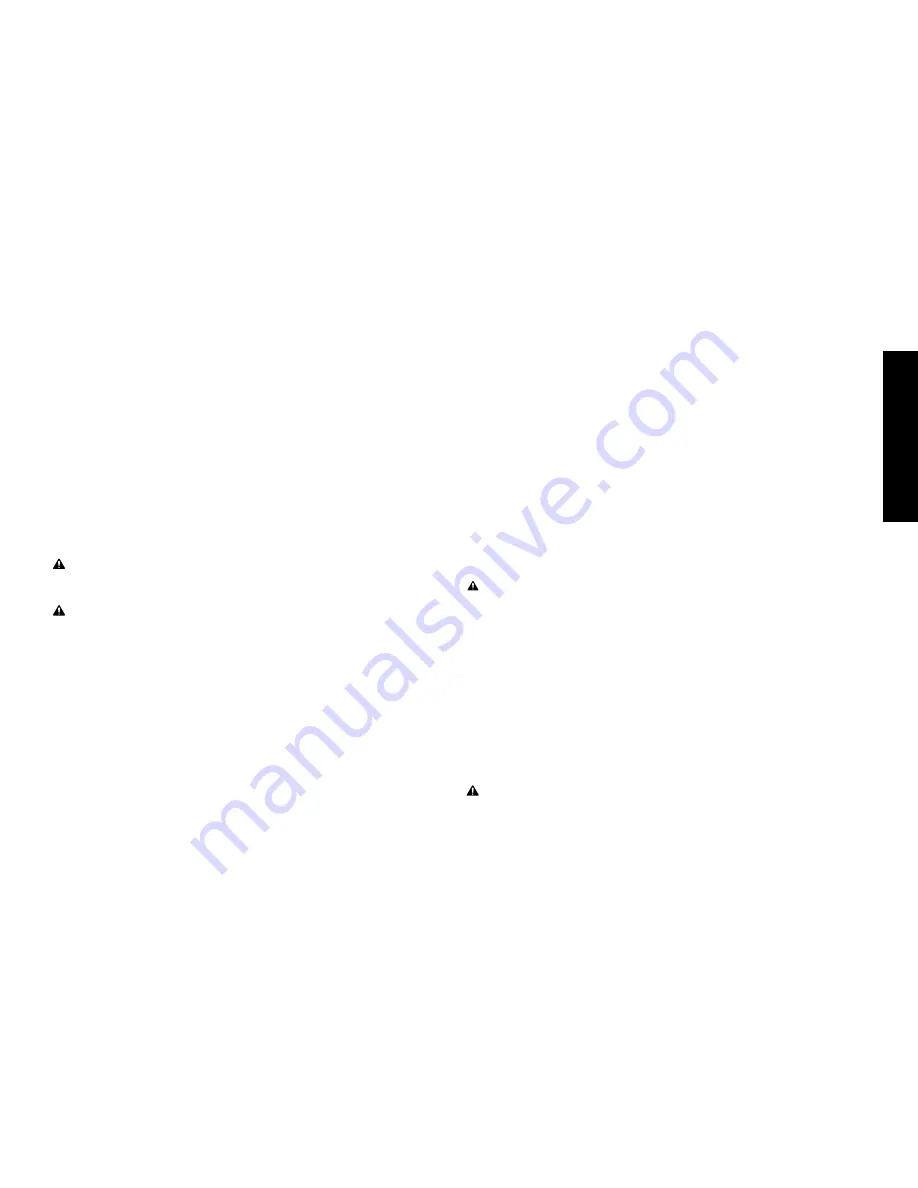
11
E
n
g
lis
h
AIr CoMPressor
The air compressor pump was filled
WItH oil at the manufacturer.
Check air compressor pump oil level before operating unit. See
Compressor Pump oil under
Maintenance.
Compatibility
Air tools and accessories that are run off the compressor must be
compatible with petroleum based products. If you suspect that a
material is not compatible with petroleum products, an air line filter
for removal of moisture and oil vapor in compressed air is required.
note: Always use an air line filter to remove moisture and oil vapor
when spraying paint.
Location
WARNING: Risk of breathing. Exhaust from the gasoline engine
contains deadly carbon monoxide, which is odorless and toxic.
Operate engine only in well ventilated areas.
CAUTION: Risk of property damage. In order to avoid damaging
the air compressor, do not allow the unit to be tilted more than 10º
when operating.
Place air compressor at least 4 feet (1. m) away from obstacles that
may prevent proper ventilation. Keep unit away from areas that have
dirt, vapor and volatile fumes in the atmosphere which may clog and
gum up the intake filter and valves, causing inefficient operation.
HuMID AreAs
In frequently humid areas, moisture may form in the pump and
produce sludge in the oil, causing running parts to wear out
prematurely. Excessive moisture is especially likely to occur if the unit
is located in an unheated area that is subject to large temperature
changes. Two signs of excessive humidity are external condensation
on the pump when it cools down and a
milky appearance in
compressor oil. You may be able to prevent moisture from forming in
the pump by increasing ventilation or operating for longer intervals.
noIse ConsIDerAtIons
Consult local officials for information regarding acceptable noise
levels in your area. To reduce excessive noise, use vibration mounts
or silencers, relocate the unit or construct total enclosures or baffle
walls. Contact a D
e
WALT service center or call 1-800-4D
e
WALT for
assistance.
trAnsPortInG
When transporting the compressor in a vehicle, trailer, etc., ensure
that the tank is drained and the unit is secured. Use care when driv-
ing to avoid tipping the unit over in the vehicle. Damage can occur to
the compressor or surrounding items if the compressor is tipped.
MoVInG
When moving the compressor, grasp the handle and carry the com-
pressor as close to the body as possible.
WARNING: Ensure proper footing and use caution when carrying
compressor to avoid a loss of balance.
PrEPArATIon For uSE
Pre-Start Checklist (Fig. 1)
1. Ensure engine ON/OFF switch (C) is in the OFF Position.
. Ensure air tank is drained, see
Draining Air tank under
Maintenance.
3. Ensure the drain valve (J) is closed.
4. Ensure safety valve (I) is functioning properly, see
Checking
safety Valve under
Maintenance.
5. Check pump oil level, see
Compressor Pump oil under
Maintenance.
CAUTION: Do not operate without oil or with inadequate oil. D
e
WALT
is not responsible for compressor failure caused by inadequate oil.
6. Check engine's oil and fuel level, see engine's instruction manual
for correct procedures.

















